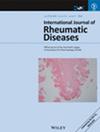Effects of Traditional Chinese Medicine Rehabilitation Program on Knee Osteoarthritis in Aging Population: A Multicenter Randomized Controlled Trial
Abstract
Introduction
Knee osteoarthritis (KOA) is a prevalent degenerative disease that causes pain and disability in older individuals. This study aimed to examine the effects of the traditional Chinese medicine (TCM) rehabilitation program for aging populations with KOA.
Methods
A total of 101 participants with KOA were randomly assigned to either a TCM rehabilitation group (n = 49) or a conventional physical therapy group (n = 52) with a 1:1 allocation ratio for this randomized controlled trial. Participants in the TCM group received acupuncture, massage, and South Shaolin exercise training for 4 weeks, with three sessions per week lasting 50 min per session. Participants in the control group received conventional physical therapies of equal duration and frequency.
Results
Outcomes were Western Ontario and McMaster Universities Osteoarthritis Index (WOMAC), Visual Analogue Scale (VAS), Knee Outcome Survey Activities of Daily Living Scale, the 6-min Walking test (6MWT), the Time Up and Go (TUG) Test, and the Stair-climbing Test. Significant improvements were observed in the WOMAC, VAS, 6MWT, TUG, and Stair-climbing test after a 4-week TCM rehabilitation intervention (p < 0.05). The WOMAC and VAS were found to be decreased at the 4-week follow-up assessments compared to baseline scores (p < 0.05). Only the TUG test showed significant changes in the control group compared with the TCM rehabilitation group (p = 0.043) after 4 weeks post-intervention.
Conclusion
The TCM rehabilitation program improved knee function and reduced pain intensity in aging populations with knee osteoarthritis. Well-designed randomized controlled trials with long-term follow-up assessments are needed to draw more definitive conclusions. Trial registration Chinese Clinical Trial Register ChiCTR2000033351, date of registration: May 29, 2020.


 求助内容:
求助内容: 应助结果提醒方式:
应助结果提醒方式:


